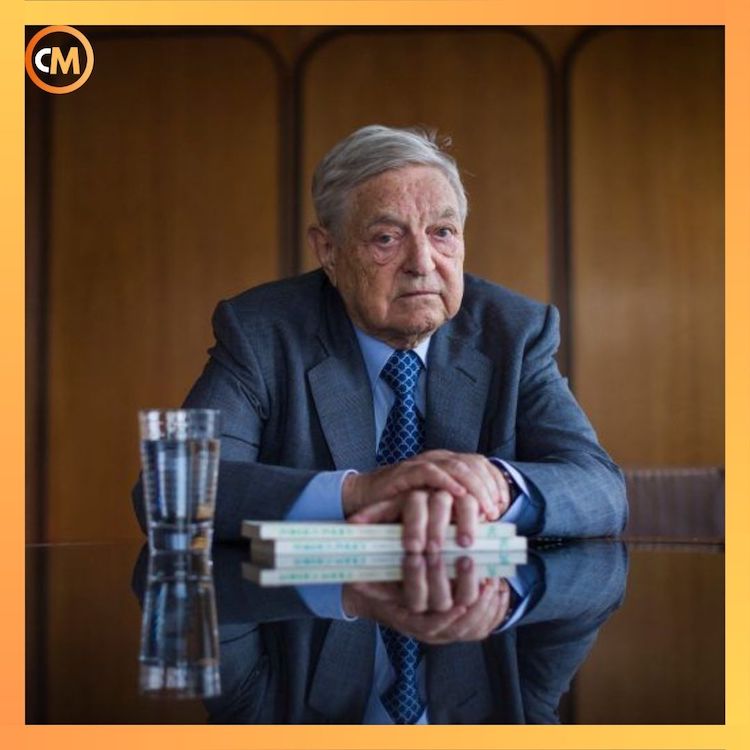George Soros is a man shrouded in political controversy and yet one of the most successful investors of all time.
While many today are familiar with his political endeavors, there is a much more interesting story that has in comparison avoided the public spotlight.
Today, we’re going back to the decade before the euro, where the wild west of European currencies allowed George Soros to almost break the Bank of England and to make a billion In the aftermath of the Second World War, the nations of Europe decided that the only way to prevent the same sort of destruction from ever happening again was by banding together and forming a closely integrated union.
The idea was that if the European economies all depended on each other they’d be unlikely to start another war.
The ultimate expression of this integration is, of course, the Euro, but before the single currency was introduced in 1999, Europe had another system to manage its currencies.
Back in 1979, the countries of the European Community weren’t ready to give up their national currencies just yet, but they did agree to link them all together at a fixed rate, effectively removing the exchange rate fluctuations you usually have to consider when doing business across borders.
This new system, known as the Exchange Rate Mechanism or ERM, sounded good on paper and did make things easier for a lot of people, but it also made the national banks of these countries very vulnerable.
You see, people buy currencies every day in vast volumes to fund imports or exports and these transactions have a significant effect on the actual exchange rate you can get from the market.
So once a country became a part of the ERM, it had to constantly monitor the markets and intervene if their exchange rate started to deviate too much.
If too many people were buying, the national bank would start to sell and if everyone was selling, it would go in to buy.
Without going into too much detail, the ERM was flawed because every country is unique it has to constantly balance interest rates, inflation, and economic growth, which it cannot do if its currency is artificially chained to others.
Margaret Thatcher, the Prime Minister of the UK at the time, understood this very well, which is why she opposed it and why Britain wasn’t a part of the ERM when it first began.
However, as the British economy worsened towards the end of the 1980s, Thatcher’s eurosceptics lost ground to the more pro-European members of the Conservative Party.

By October 1990 Thatcher’s power had diminished so much that Britain joined the ERM despite her opposition, thanks to the political power of John Major, the Chancellor of the Exchequer at the time.
Less than a month later, Thatcher had resigned and Major was selected as prime minister, hailing the ERM as his victory.
All my adult life I’ve seen British governments driven off their virtuous pursuit of low inflation by market problems or political problems.
I was under no illusions when I took Britain into the Exchange Rate Mechanism. I said at the time that membership was no soft option.
The soft option, the devalues option, the inflationary option, in my judgment that would be a betrayal of our future at this moment and I tell you categorically that is not your government’s policy.
But while November 1990 might have been the start of a very successful political career You see, when the UK joined the ERM, it was already in a recession.
Now, when an economy is in a recession the central bank, in this case, the Bank of England wants to cut interest rates to prop things up, but because of the ERM, it could no longer do that.
The British pound was already a very weak currency, with the UK’s inflation rate being three times higher than Germany’s.
If the Bank of England cut rates, it would help the British economy, but it would devalue the pound so much that Britain would have to leave the ERM, which of course John Major would never allow.
And so between 1990 and 1992 the British economy suffered.
Of course, just keeping interest rates high wasn’t enough to maintain the pound’s value and so throughout these two years the Bank of England would frequently go to the market and start buying up pounds by the millions, using up its foreign exchange reserves in the process.
Even that didn’t really help though, since the pound continuously weakened during this time, just barely within the limits of the ERM.
Pretty much every currency speculator understood that eventually, the British pound would have to devalue, but the billion-dollar question was, when would that happen and the man with the answer was George Soros.

He had been running his hedge fund since the 1970s and his specialty was predicting and sometimes forcing the catalysts to big market events.
He knew that almost everyone was ready to bet against the British pound if only there was some sort of bad news that could trigger a stampede big enough to overwhelm the Bank of England.
Starting in August 1992, Soros and his fund began building a position against the pound, and here’s how he did it.
He’d go to a big bank or another hedge fund and he’d borrow pounds from them, with the promise of repaying them with some interest on top.
Then, he’d go to the foreign exchange market and he’d sell those borrowed pounds to buy
German marks instead, the idea being that when the exchange rate drops he’d be able to buy back those pounds cheaper, earning the difference as profit.
By the end of August Soros had slowly built up a position equivalent to $1.5 billion dollars against the pound, but the exchange rate had barely moved.
He needed some sort of news to really start increasing his position and luckily for him, on September 16th the President of the Bundesbank held a seemingly innocent interview that Soros could nevertheless use.
The Bundesbank President said that he “doesn’t rule out that some currencies might come under pressure,” which in and of itself is a very vague and unconvincing statement, but Soros decided that it was good enough for him.
That same night, while Europe was fast asleep, Soros called up any international bank or company or really anyone that had British pounds and he tried to borrow them with great success.
By the time the British woke up, Soros had sold the equivalent of $10 billion worth of pounds on the open market.
Unsurprisingly, the Bank of England was in complete chaos.
After an emergency meeting with John Major, the Chancellor of the Exchequer began a desperate fight.
At 8:40 AM on September 17th, he authorized the purchase of one billion pounds from the market to no effect.
By 9 AM he had purchased another two billion pounds, at which point he dialed John Major again to request permission to increase the interest rate, which of course because Britain was in a recession would be devastating to the economy.
Initially, John Major refused because he thought it would be political suicide, but as Soros and the global currency market continued selling pounds, by 11 AM Major conceded and Britain made a surprise announcement that it was increasing its interest rates by two percent, which is a very big increase.
By the end of the day, Britain had purchased 27 billion pounds and had increased its interest rate a second time to 15%, but just Soros alone had sold about half as many pounds and by that point, the entire world was following suit.
At 7:30 PM the British government accepted defeat with the following news conference.
A unique day in London’s financial markets ended with the Chancellor announcing that the pound was being suspended from the ERM and that the second of two dramatic interest rate rises during the day was after all canceled.
Today has been an extremely difficult and turbulent day.
Massive speculative flows continued to disrupt the functioning of the Exchange Rate Mechanism.
As chairman of the Council of European Finance Ministers, I have called a meeting of the Monetary Committee in Brussels urgently tonight to consider how stability can be restored to the foreign exchange markets.
In the meantime, the government has concluded that Britain’s best interests are served by suspending our membership of the Exchange Rate Mechanism.
Over the next few days, as the foreign exchange markets were left to their own devices, the British pound fell by 15% against the German mark and by 25% against the US dollar.
Soros and his fund pocketed a nice $1 billion from their trade, while the estimated cost to the British taxpayer was over 3 billion pounds.
Here’s the funny thing though in the aftermath of Black Wednesday, as they called it, the Bank of England was once again free to control the British pound, which it did and over the next few years it steadily cut interest rates and actually restored the British economy to high levels of growth.
By 1997 the British pound was actually more valuable than it had been during the ERM and the UK was on its way to 16 consecutive years of economic expansion, so much so, that some people actually call that day White Wednesday.
So in the end, Soros might’ve actually done the British a favor, even though he pocketed about $15 for every man, woman, and child in Great Britain.




